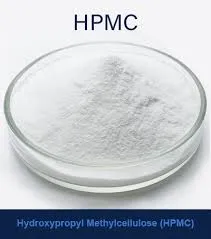
Feb . 01, 2025 05:29 Back to list
HEC


Additionally, the molecular weight of hydroxyethyl cellulose can influence its solubility. Different grades of HEC are available, ranging from low to high molecular weight, each imparting varying degrees of viscosity and solubility behavior. Therefore, choosing the appropriate grade of HEC is crucial for specific applications to achieve desired performance outcomes. The credibility of hydroxyethyl cellulose in formulations is underpinned by extensive research and development within the field. Studies have explored its solubility and interaction with other components, ensuring that it meets industry standards for efficacy and safety. This robust body of knowledge fosters trust among manufacturers and formulators, who rely on hydroxyethyl cellulose to deliver consistent and reliable results. Experts in formulation science emphasize the importance of methodical experimentation and application testing. This involves not only understanding the basic solubility principles but also applying them in real-world scenarios to tailor solutions that meet specific end-use criteria. Such expertise highlights hydroxyethyl cellulose as a cornerstone in product development, especially when solubility is critical for the performance of the final product. In conclusion, the solubility of hydroxyethyl cellulose in water is a nuanced subject imbued with scientific and practical importance. Its ability to dissolve efficiently while imparting essential functional properties makes it an integral component across numerous sectors. It is the blend of empirical understanding, meticulous application, and rigorous quality standards that ensures its preeminence and reliability, reflecting the advanced capabilities of modern polymer chemistry. By leveraging its solubility attributes, businesses can innovate and refine their products, driving advancements in technology and bringing superior offerings to market.
-
Unlocking the Benefits of HPMC Products: A Gateway to Versatile Applications
NewsAug.07,2025
-
Unleashing the Potential of HPMC Ashland: A Comprehensive Look
NewsAug.07,2025
-
Tile Bonding Cellulose: The Key to Superior Adhesion and Durability
NewsAug.07,2025
-
Hydroxypropyl Methylcellulose Powder: The Versatile Component in Modern Pharmaceuticals
NewsAug.07,2025
-
Hydroxyethyl Cellulose: The Versatile Solution for Various Industries
NewsAug.07,2025
-
Hydroxyethyl Cellulose (HEC): The Versatile Polymer for Various Applications
NewsAug.07,2025







